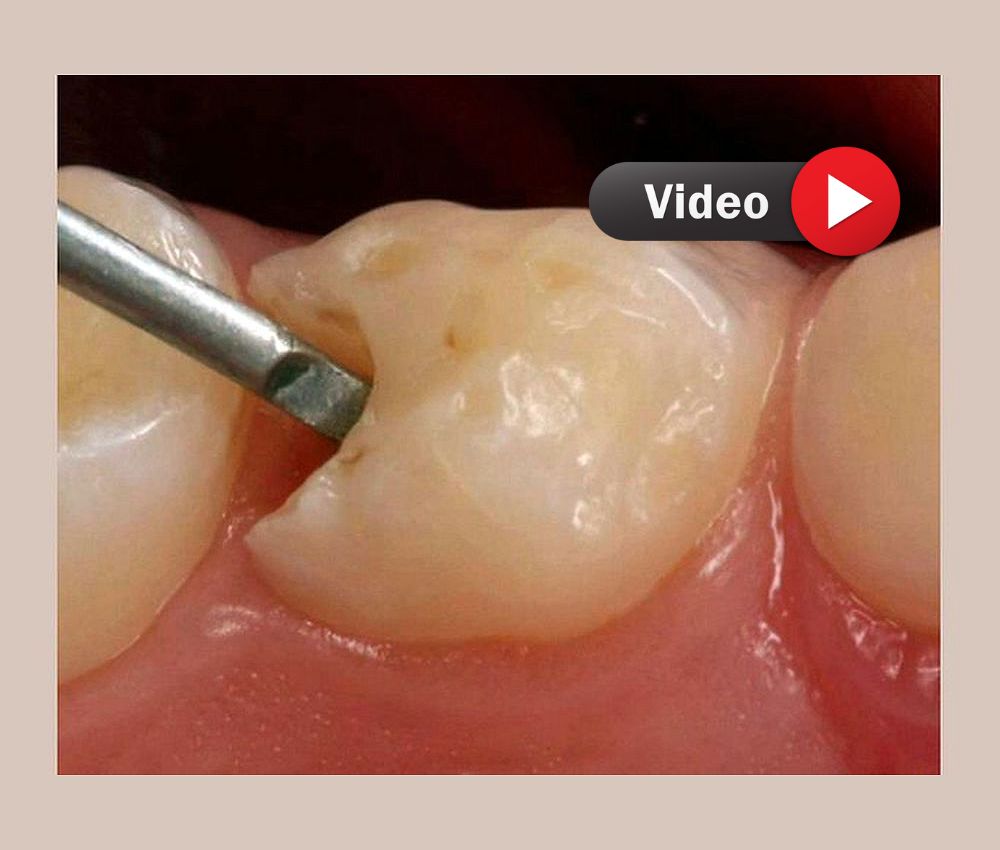Modern dentistry increasingly embraces minimally invasive approaches that prioritize preserving healthy tooth structure and enhancing the patient experience.
📌 Recommended Article :
Video🔽 Use of Silver Diamine Fluoride (SDF) - General Guide on its application ... It offers several advantages such as its easy application, low cost, it avoids the use of dental anesthetics, and it can be applied in places that do not have dental equipmentIn this context, chemical caries removal (CCR) has emerged as a safe, effective alternative to traditional drilling—especially valuable in pediatric dentistry and for patients with dental anxiety or phobia. This technique allows clinicians to eliminate decayed dentin without rotary tools, reducing discomfort, fear, and the need for local anesthesia.
Advertisement
✅ What Is Chemical Caries Removal?
CCR is a conservative, non-invasive technique that uses enzymatic or oxidizing agents to soften infected dentin, allowing its manual removal without mechanical drilling. Common products include Carisolv®, Papacárie Duo®, Brix3000®, and Carie-Care™, which have proven effective in clinical studies.
✅ Why Is CCR Ideal for Children and Anxious Patients?
1. Avoids the dental drill
The sound and vibration of a dental drill often trigger anxiety in children and phobic adults. CCR eliminates the need for rotary instruments.
2. Often requires no local anesthesia
Recent studies show that chemical agents can remove caries painlessly, making injections unnecessary in many cases (Elgalaid et al., 2022).
3. Increases treatment acceptance
Minimally invasive techniques result in a more relaxed experience, improving cooperation in young children and anxious patients (Ghasempour et al., 2020).
4. Preserves healthy tooth structure
Most CCR products act selectively on infected dentin, aligning with the principles of minimally invasive dentistry.
5. Creates a calm clinical environment
Less noise and vibration help maintain a soothing atmosphere, reducing stress for both patient and provider.
📌 Recommended Article :
PDF 🔽 Molar incisor hypomineralisation: Definition, diagnosis and clinical management ... In comparison, the metabolism of a drug in a child is different from that of an adult, so the administration of an antibiotic should be taking into account the diagnosis, age and weight of the pediatric patient✅ Latest Scientific Evidence
Recent clinical research highlights CCR’s effectiveness and patient acceptance:
° Elgalaid et al. (2022) found that Carisolv® significantly lowered anxiety and pain perception in children compared to conventional methods.
° Ghasempour et al. (2020) reported high satisfaction rates using Brix3000® among children aged 4–7 years.
° Santos et al. (2021) confirmed the safety and effectiveness of Papacárie Duo® in patients with mild to moderate dental anxiety.
📌 Recommended Article :
PDF 🔽 Alternative for the rehabilitation of pediatric patients with early childhood caries ... We share the oral rehabilitation of a pediatric patient affected by early childhood caries, using a functional appliance aesthetically appropriate for the patient✅ Clinical Guidelines
° Indications: Ideal for shallow to moderate dentin caries without pulpal involvement.
° Contraindications: Avoid in deep lesions near the pulp or sclerotic dentin.
° Chair time: Slightly longer than conventional drilling, but often compensated by improved cooperation.
° Restoration options: Compatible with adhesive and bioactive restorative materials.
📌 Recommended Article :
PDF 🔽 Pharmacological treatment of oral infections in pediatric dentistry - Recommendations and dose calculation ... In comparison, the metabolism of a drug in a child is different from that of an adult, so the administration of an antibiotic should be taking into account the diagnosis, age and weight of the pediatric patient💬 Discussion
Chemical caries removal represents a paradigm shift in managing caries in vulnerable populations. Its patient-friendly and drill-free nature allows for a less traumatic and more empathetic experience. The ability to reduce fear and discomfort during treatment makes CCR especially valuable in pediatric and behavioral dentistry. It also fosters better long-term dental relationships by building trust from an early age.
💡 Conclusion
Chemical caries removal is a powerful tool for modern dentistry, particularly when treating children and patients with dental phobia. Backed by recent evidence, its use promotes a more comfortable, conservative, and effective dental care experience. CCR should be considered a standard part of the clinical toolkit when aiming for anxiety-free dental visits.
📚 References
✔ Elgalaid, M. A., Alshoraim, M. A., Alhazmi, Y. F., & Alahmari, R. A. (2022). A randomized clinical trial comparing Carisolv and rotary instruments in caries removal: anxiety and pain perception in pediatric patients. BMC Oral Health, 22, 333. https://doi.org/10.1186/s12903-022-02458-4
✔ Ghasempour, M., Yeganeh, P., & Golkari, A. (2020). Comparison of the effectiveness of Brix3000 and conventional methods in caries removal in children. Journal of Dentistry for Children, 87(3), 151–156.
✔ Santos, A. P., Freire, M. C. M., Oliveira, B. H., & Paiva, S. M. (2021). Effectiveness of Papacárie Duo in minimally invasive treatment of dental caries in anxious children: a randomized clinical trial. Pediatric Dentistry, 43(4), 259–265.
✔ Lussi, A., & Schaffner, M. (2019). Advances in minimally invasive caries removal: Chemo-mechanical agents. In Mount, G. J. & Hume, W. R. (Eds.), Preservation and Restoration of Tooth Structure (3rd ed., pp. 97–104). Wiley-Blackwell.
📌 More Recommended Items
► Chemical Caries Removal: Drill-Free Technique, Materials, and Clinical Application
► Glass Ionomer Cement in Pediatric Dentistry: Benefits, Uses, and Step-by-Step Application Guide
► How well do fluoride treatments work at preventing tooth decay?











